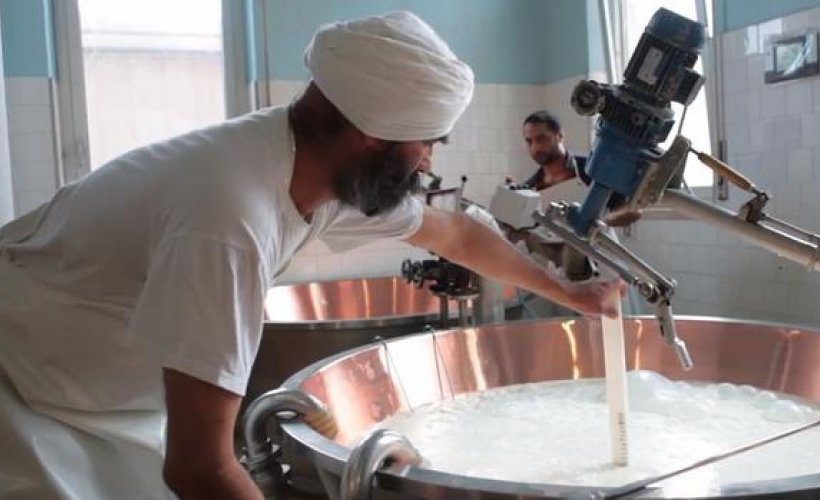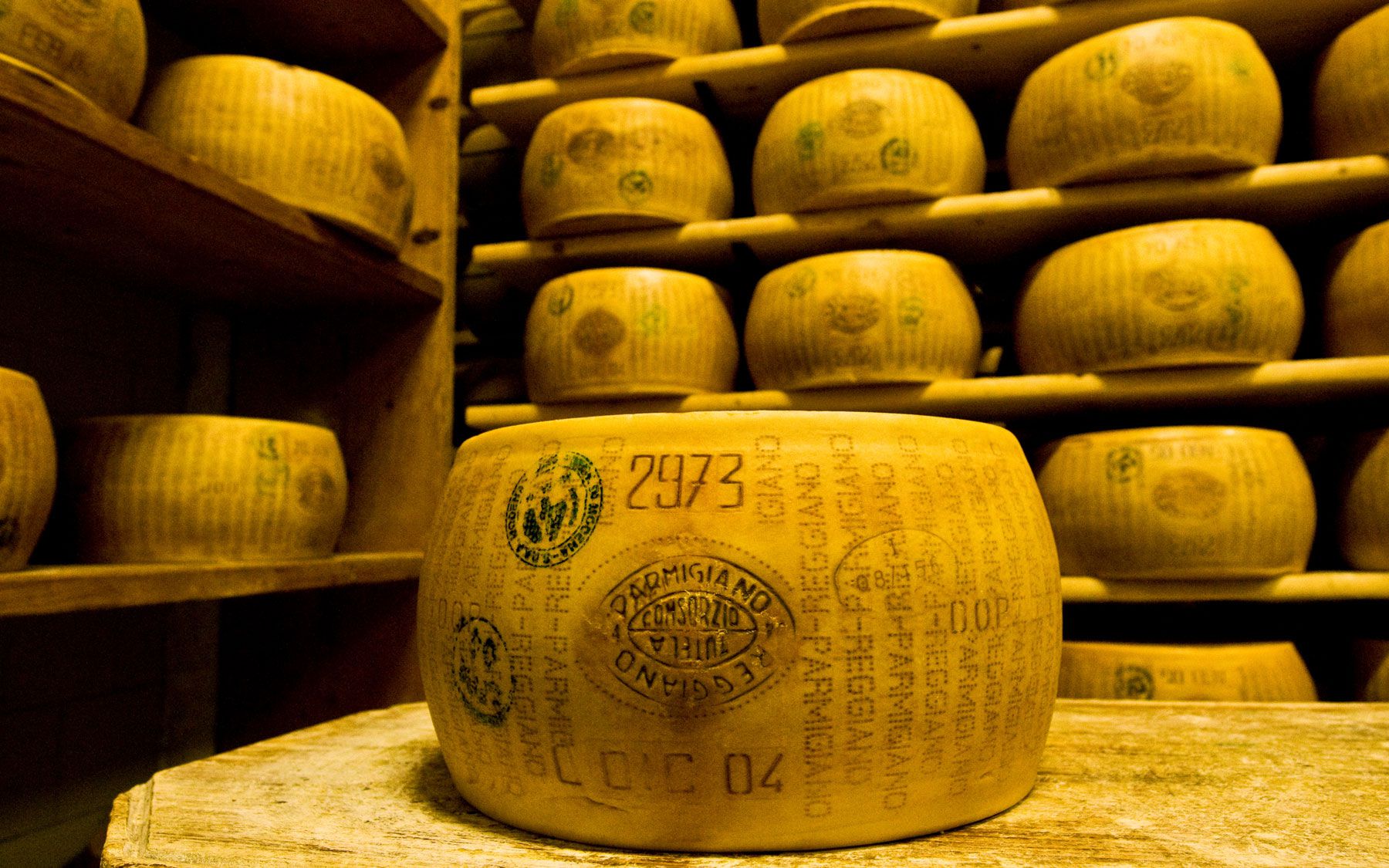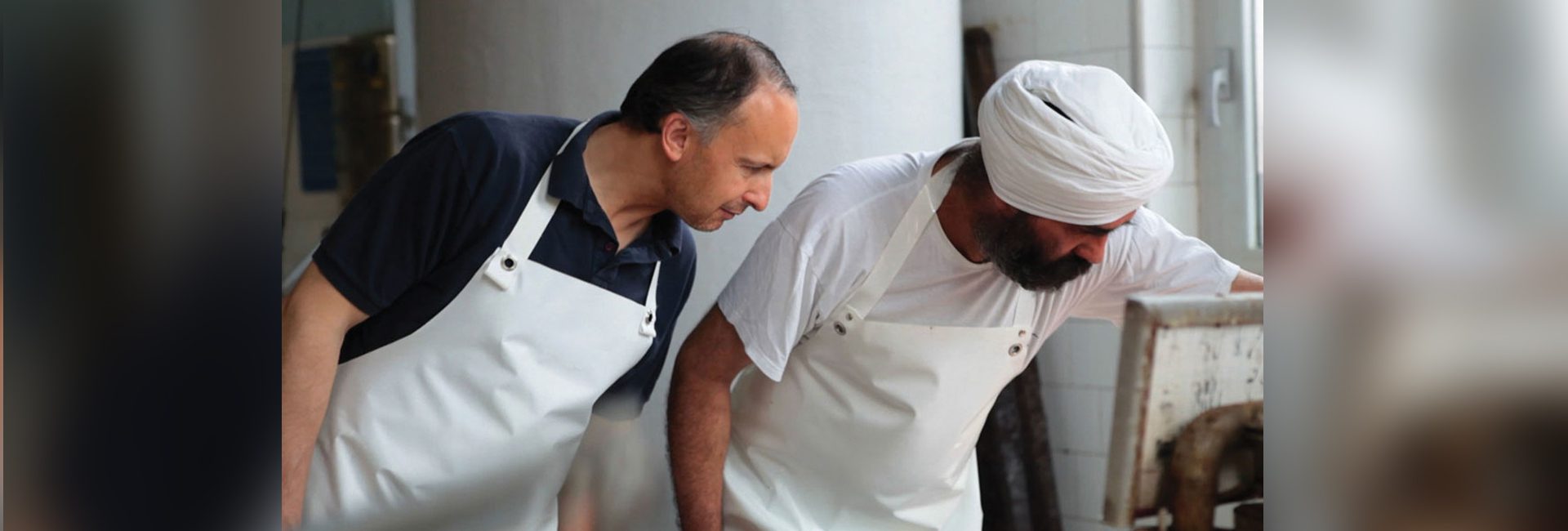(September 27, 2022) The pale-golden rind and straw-coloured interior, aged for over two years, make Parmigiano-Reggiano rich in flavour and world-famous. The authentic and artisanal cheese from northern Italy, with its rich, nutty, and delicate taste, has brought the world to its knees. But not many know that the Sikh community has a major role in keeping Parmesan alive. Yes, you read it right! Some three decades ago, when the economy was booming, the Italian goivinezza (youth) turned their back on countryside living and the traditional occupation of cheese-making and moved to the main cities in search of better career opportunities. They left a vacuum that was instantly filled by Sikhs who came to the land of wines and cheese seeking work away from their homeland after the insurgency in Punjab. They came armed with a love for farming and innate skills that were in short supply in Italy and played a key role in the resurrection of Italy’s Parmesan cheese.

Sikh community has played a pivotal role in saving Italy’s cheese industry (Photo courtesy: thecanyonchronicle.com)
Though it wasn’t the cheese that attracted the Sikhs to the green pastures initially, the flat territory with hot and humid weather reminded them of a home away from home. For two decades, the Sikhs worked at the stalla (dairy farm) tending to the cows, as language was hardly a barrier while dealing with cattle, but it was only in 2011 that famed writer Khushwant Singh first brought the stories of the Sikh community in Italy to the forefront. In an article for Hindustan Times, he unraveled the secret that was tucked away from the public eye for too long. A trip to village Olmeneta, near Cremona in Lombardy, brought him in contact with the ‘mini-Punjab’, created by Sikhs on Italian soil. Most moved to Italy in the 80s and 90s when Punjab was boiling due to riots. In search of a better life, many sought asylums in Europe, ready to find a footing in Italy.

Italy’s Parmesan is world-famous for its distinct flavour. (Photo courtesy: Travelandleisure.com)
“At home, we have fields and cows, and our relationship with the land and animals is very particular to us. So, when we came here and didn’t know the language, this was something in our favour,” Amritpal Singh, a Punjab native who moved to Novellara in Italy in the 80s told BBC. While most Sikhs became involved with the cows, others found themselves immersed in the art of cheese-making – something that the young locals were abandoning. “They (Sikhs) saved an economy that would have gone to the dogs because young people didn’t want to work with cows,” the then Mayor Dalido Malaggi of Pessina Cremonese told NYT.
Today, Italy has the largest Sikh population in Europe, only second to the United Kingdom, with an estimated number of 220,000. What started as a safe haven in the 80s for Sikhs escaping the riots has now turned into a land that is dependent on them for keeping their dairy industry and parmesan alive. Khushwant Singh quoted Aldo Cavagnoli, the then director general of Latteria Sorseina, one of the largest cheese factories in the region, saying, “We certainly owe it to the Sikhs for keeping the business of cheese alive.”
Around 54 percent of the people involved with producing cheese at Latteria Sorseina are Sikhs. Originally made by the monks near Parma in the Middle Ages, it only got its name Parmesano (of or from Parma) in the 1530s, by Italian nobles. However, in 1954 it officially became Parmigiano Reggiano, popularly called Parmesan.
Sikhs’ hard work and love were reciprocated by the Italians when the Novellara municipality in 2000 granted permission to build Gurudwara Sri Guru Kalgidhar Sahib, touted to be the largest Sikh temple in Continental Europe. Many have now got Italian citizenship but most identify as Indo-Italians. “You can’t cut your roots so I keep them alive inside me, but the rest is Italian,” Amritpal told BBC. Italy embraced them at a time when they were looking for safety and provided a livelihood in a foreign land. Though the influx of Sikhs to Italy from Punjab is on a rise, the land of cheese is welcoming them with open arms.



